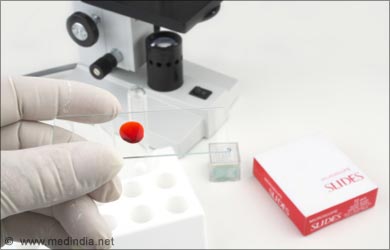Diagnosis of Sickle Cell Anemia
Sickle cell anemia can be diagnosed with a simple blood test.
Most countries routinely screen newborns for sickle cell disease with a simple blood test.

A blood smear is made on a micro-slide and is studied under the microscope. A special low-oxygen preparation, commonly known as the sickle prep, is made as sickling is easily established under low oxygen conditions.
If the disorder is not detected at birth, a hemoglobin electrophoresis test will help determine whether a person has sickle cell disease, or whether he or she is a carrier of the faulty hemoglobin gene. HbS (S for sickle) has a different electrical charge from the normal HbA (A for adult) and hence the mobility of both these types of Hb will be uniquely characteristic when placed in an electrical field. This principle is used in the diagnosis of sickle cell anemia (SCA), when an electrophoresis is carried out to separate both the hemoglobin based on their charges.
Prenatal diagnosis of sickle cell anemia can be done using amniocentesis or chorionic villus sampling. The tissue samples are subjected to DNA analysis to detect the aberration responsible for HbS.
















